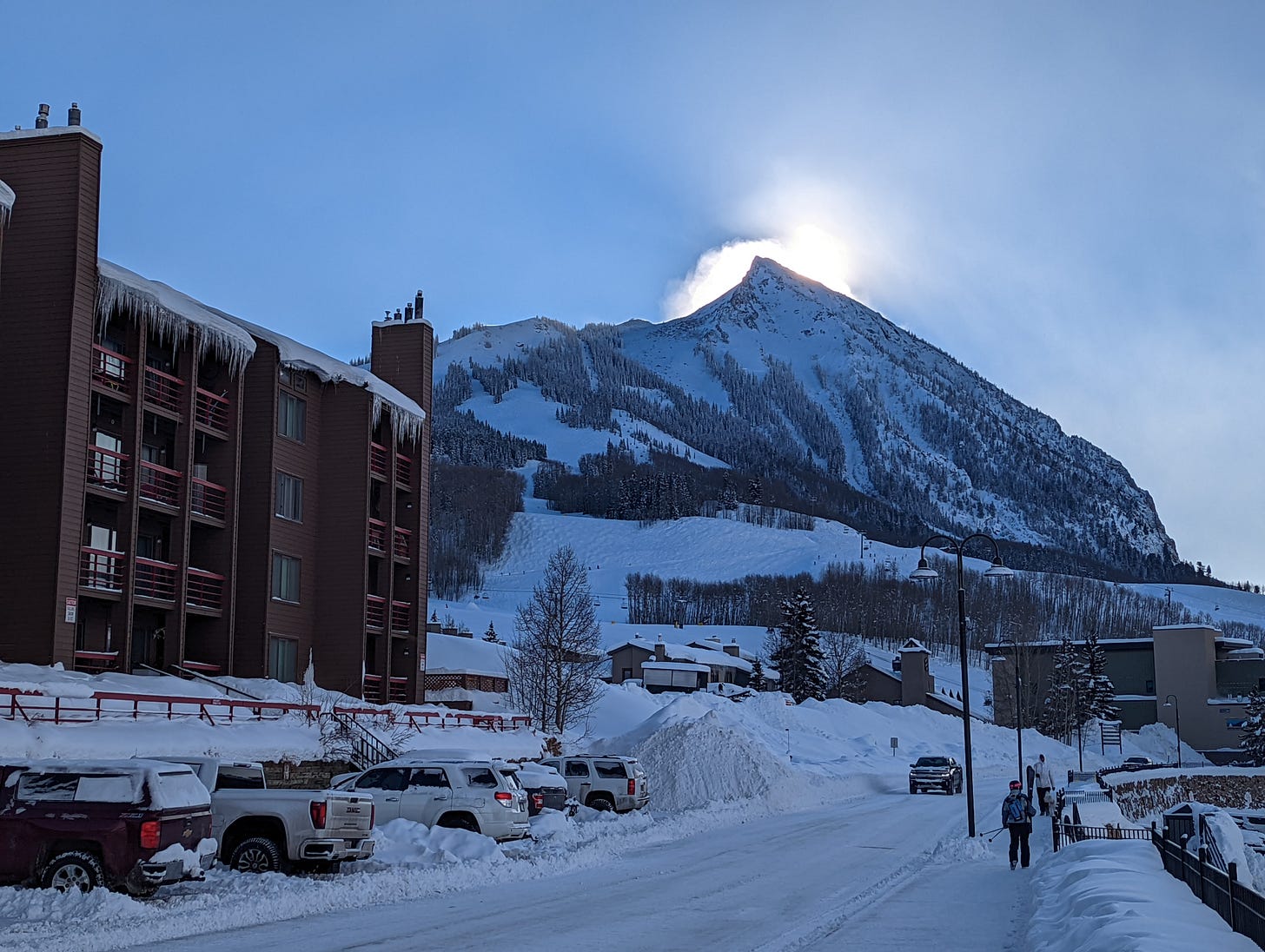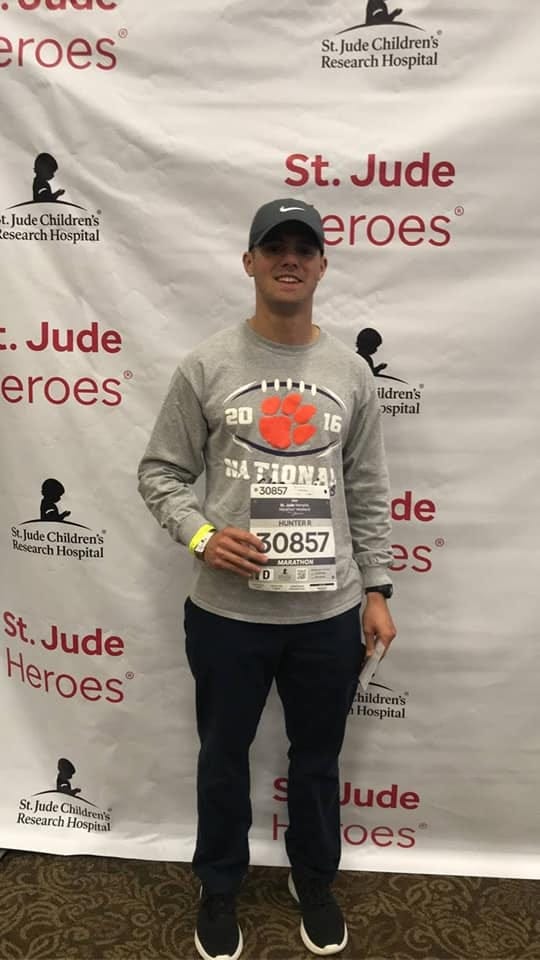A concept that I often think about regarding recreation is an activity’s barriers to entry. Although my name is Hunter, I am far from one. I’ve gone hunting once in my life, and I had to ask a friend to take me. That friend had been hunting his whole life. He grew up in a family that met the prerequisites; the generational knowledge that goes into hunting, the firearms and equipment needed to kill and move a deer, and a share of land. All he needed was some coaching from his old man, a hunter’s safety course, and a permit.
Last year, for the first time in my life, I went skiing. It only happened because I was invited to a bachelor party in Breckenridge, and I didn’t want to sit at the AirBnB by myself all day while everyone else skied. Three years removed from knee surgery, I was pretty terrified. However, I went ahead and forked over the cash for lift tickets, ski rentals, and a lesson. I had an absolute blast, and I ventured back to the Rockies earlier this year to get back on the mountain. The barriers to entry were high, and I definitely paid a financial price and took a physical risk, but it paid off. I’d love to get into fly-fishing next.

Barriers to entry keep most of the population from activities like hunting, skiing, wakeboarding, scuba diving, and horseback riding. It just makes sense that the average person doesn’t play polo on the weekends.
Conversely, anybody can go outside and walk, run, or do bodyweight exercises for free. Gym memberships run as low as $10/month. The barriers to entry for meeting the US Department of Health and Human Services’ guidelines for physical activities are almost non-existent. And yet, two-thirds of our population are overweight or obese. Personally, I think that unwillingness to just get in shape, let alone participate in a sport such as distance running or powerlifting, boils down to a lack of education, inspiration, and ownership. I’m not here to speculate on the ever prevalent and nuanced socio-economic issues in our nation and world; all I can do is share what has worked for me—goal-setting and accountability. In fact, setting goals is one of my training principles.
Whether short or long term, establishing a goal creates a foundation for my training. It gives me a "why" that drives my decision-making process. Sometimes there are multiple goals, sometimes only one, specific at times and broad at others. Regardless, there is always a goal. Otherwise, my "training" is just "working out."
In 2019, I failed the US Army's Ranger School. I spent 91 days there, mind you, and many students graduate the course in just 62. After being deprived of food, sleep, and a normal life for that amount of time, all just to fail, I felt soft, weak, and sorry for myself.
I made the decision to register for the St. Jude Children's Research Hospital Marathon in my hometown of Memphis, Tennessee. Why? Because I felt like I needed to do something hard and worthwhile to get my edge back. I ran over 500 miles over the course of half a year, met my goal of completing the race below three hours and 45 minutes (finishing at 3:42:01), and learned a lot about myself. More importantly, I raised over $2,000 for the kids of St. Jude. I wouldn't have accomplished any of that if I hadn't set a big goal.
There is a broad range of methodologies behind goal-setting as well as a number of mechanisms for holding yourself to doing the things you’ve said you’re going to.
As referenced above, I set multiple goals for that marathon in 2019: completing the race, finishing under 3:45, and raising $1000 or more. Paying the entry fee, putting a date on the calendar on which I’d have to run 26.2 miles (remember last week when I talked about writing things down), and pledging to fundraise a certain amount were my forcing functions of accountability. I completed the race, beat my target time by three minutes, and doubled my fundraising goal. It was great to go three-for-three on those objectives, but that is not to say that it always goes that smoothly or that it would’ve all been a waste if I hadn’t succeeded. Even if I hadn’t beaten my time goal or finished the marathon at all, I still would’ve raised all that money for a good cause and put all that time and effort into preparation. The race itself had less of a transformative effect on me physically and mentally than the six months and 500 miles of training. As cliché as it sounds, the most important part of any journey is the process, not the outcome.

Similar to 2019, I’m putting my money–as well as time and effort–where my mouth is in 2023. I’m just under a month away from the Conquer the Rock 25K, which will be my longest and steepest trail run to date. I’m still shopping around, but I will sign up for a powerlifting meet in the near future as well.
I’m not saying everyone needs to run a marathon or compete in powerlifting, far from that. But it’s important to put some thought into determining what your goals are and actually committing to the pursuit of those objectives. Physically, I want to be the strongest, fastest, and best version of myself; getting a date on a calendar, putting my name on a list, and investing financially are my proven mechanisms of accountability.
I don’t have New Year's resolutions. Each year, I set personal, spiritual, financial, professional, and physical goals, write them down, put dates next to them, establish milestones I need to meet along the way, and check in frequently to make sure I’m still on track. If your goal is to go get a master’s degree, sign up for the GRE or pay the application fee today; don’t wait until the time is right. If your goal is to get in better shape, hire a personal trainer or buy a gym membership today–I will even help you if you don’t know where to start. Whatever it is you want to be or do, make the investment and commitment today.






